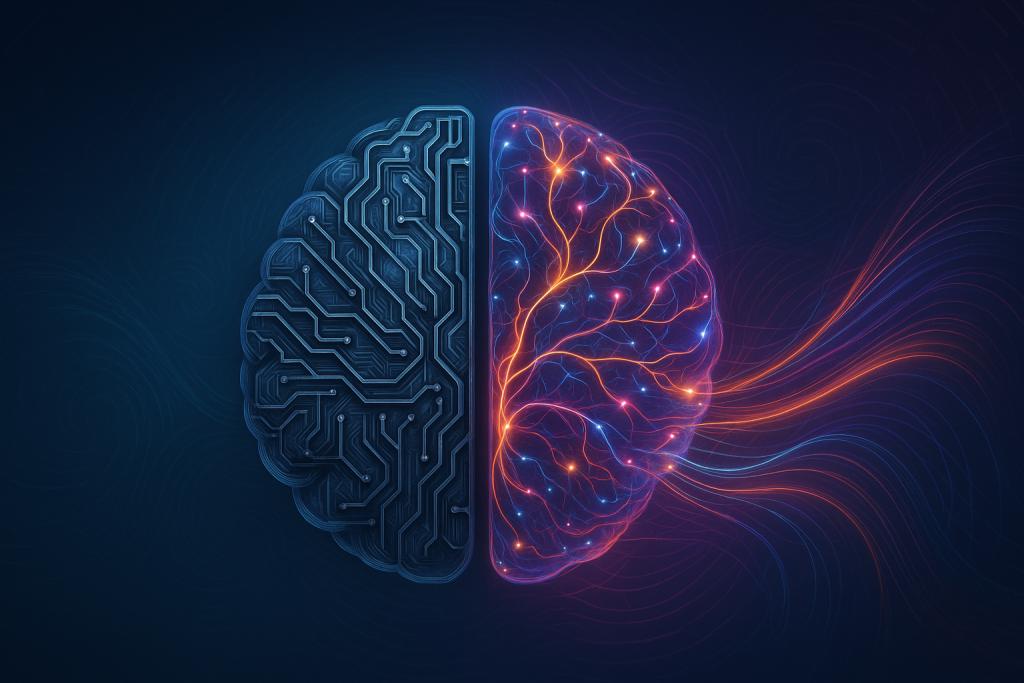
The brain is not a static organ. It’s constantly in flux, reorganising itself with every experience.” This insight from neuroscientist Dr. Norman Doidge revolutionised our understanding of the human brain. But what’s rarely discussed is how hypnosis creates the perfect conditions for this reorganization to happen rapidly and effectively.
Today we are connecting these dots for you—showing precisely how the hypnotic state facilitates neuroplasticity and why this matters for your practice. You’ll learn exactly which hypnotic techniques align with the brain’s natural rewiring process, allowing you to work more effectively with anxiety, trauma, chronic pain, and habit change.
The Science Behind Your Brain’s Remarkable Ability to Change
Have you ever wondered what’s actually happening in your brain when a client transforms a lifelong phobia in just three sessions? The science behind this is more fascinating than most practitioners realize. For years, the prevailing wisdom taught us that adult brains were fixed and rigid after childhood development periods.
Many of us were trained with this outdated model that suggested change was difficult or even impossible after certain ages. It’s quite remarkable how pervasive this belief was, considering what we now know about the brain.
This fixed-brain model created a fundamental contradiction in therapy – we were promising clients transformation while secretly believing their brains were hardwired and resistant to change. This cognitive dissonance limited our effectiveness and confidence as practitioners. When we subtly communicate doubt, our clients pick up on it, don’t they?
What’s actually happening inside the brain during hypnotherapy is extraordinary. When we guide clients into hypnosis, their brainwave patterns shift predominantly into alpha and theta states. These specific frequencies, between 4-12 Hz, create the perfect neurological environment for accelerated learning and rewiring. It’s not just relaxation – it’s a neurologically distinct state where the brain becomes exceptionally adaptable.
The most fascinating aspect is what happens to different brain regions during hypnosis. The anterior cingulate cortex shows increased activity, which is crucial for focusing attention and encoding new learning. Simultaneously, the dorsolateral prefrontal cortex – responsible for critical thinking and self-judgment – exhibits reduced activity. This combination essentially creates an open mental workspace where old neural patterns can be revised without the usual resistance.
Long-term potentiation, the process where repeated stimulation strengthens synaptic connections, accelerates dramatically during hypnosis. Research indicates this process happens 3-5 times faster than in normal consciousness. That’s why clients often make more progress in three hypnotherapy sessions than they might in months or years of conventional therapy – we’re literally creating optimal conditions for rapid neural reorganization.
What’s particularly interesting is how this explains the surprising permanence of changes made through hypnotherapy. We’re not just offering temporary relief or conscious coping strategies – we’re facilitating actual structural changes in neural circuitry. The new pathways created during hypnosis continue to strengthen through experience-dependent neuroplasticity long after the session ends.

Leveraging Neuroplasticity in Your Hypnotherapy Sessions
Those structural neural changes we create are powerful, but most clients don’t immediately grasp what “neuroplasticity” means for their specific situation. What if the right analogy could instantly transform a skeptical client into someone who deeply believes in their capacity for change?
I’ve found that the way we communicate brain science dramatically impacts treatment outcomes. Many clients come to us after years of being told their problems are permanent or that “this is just how their brain works.” Our challenge as practitioners isn’t just knowing the science – it’s translating it into language that creates immediate shifts in belief and possibility.
When I work with clients, I’ve discovered that concrete metaphors create instant cognitive breakthroughs. One of my favorites is comparing neural pathways to paths in a forest. I explain how frequently traveled paths become well-defined over time – just like their habitual thought patterns – while new behaviors require cutting fresh paths through dense underbrush. You can actually see clients’ faces light up as they suddenly understand why change has felt so difficult.
This forest metaphor extends beautifully to explaining hypnosis itself. I describe their critical faculty as a diligent forest ranger who normally keeps them on those familiar trails for efficiency and safety. Hypnosis temporarily bypasses this ranger, allowing us to venture off established routes and create alternative neural pathways that eventually become the preferred options. This simple explanation transforms their understanding of what we’re actually doing in sessions.
Visual evidence can be exceptionally powerful too. I keep a tablet with before-and-after brain scans showing changes in neural activity between anxiety and calm states. These images provide tangible proof that the brain physically changes, which helps clients truly believe in the process – especially those analytical types who need “evidence” before fully committing.
The specific language we use during inductions can directly target neuroplasticity as well. I incorporate phrases like “with each breath, your mind is becoming more flexible and adaptable” or “these new neural pathways strengthen and solidify with each moment in this relaxed state.” This approach aligns perfectly with Milton Erickson’s utilisation principle, which acknowledges existing neural patterns while introducing variations that allow new pathways to form.
As we come to the end of our journey into the transformative power of neuroplasticity and hypnotherapy, I want to emphasise something profound. What we’re witnessing in our practice isn’t just change—it’s actual biological transformation. As Dr. Michael Merzenich explains, “The brain is a dynamic, living organ that can change and adapt throughout our lives, and neuroplasticity-based therapies can harness this ability for healing and growth.”
What’s truly remarkable about neuroplasticity-based interventions is their power to create lasting structural changes. Research has shown cognitive training can increase gray matter density, with studies demonstrating up to 15% increase in hippocampal volume after just six months. This isn’t temporary relief—this is permanent rewiring.
When you sit with your next client, remember you’re facilitating a biological miracle. Every suggestion, every metaphor you craft is potentially creating physical changes in their neural architecture that continue strengthening long after they’ve left your office. This isn’t just therapy—this is guided neurological transformation. And that, I believe, is the true art and science of what we do as practitioners.
